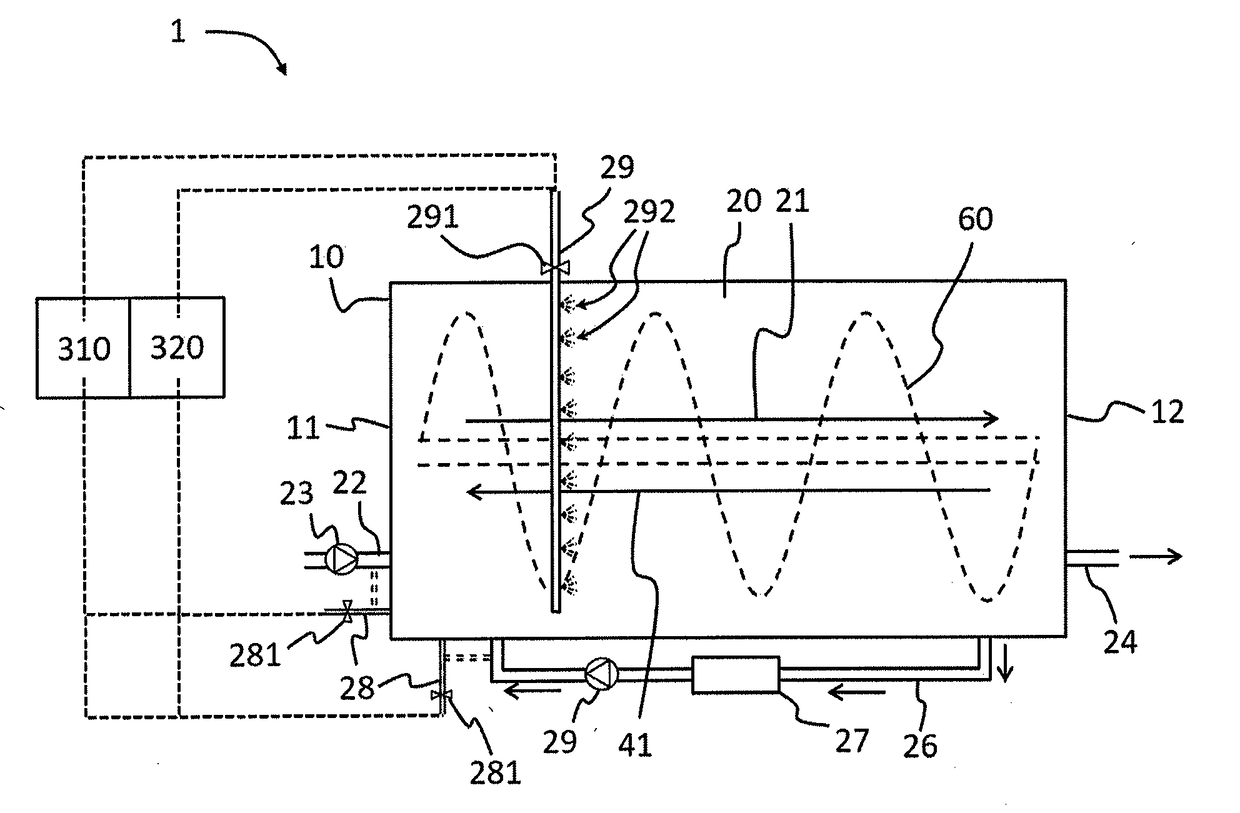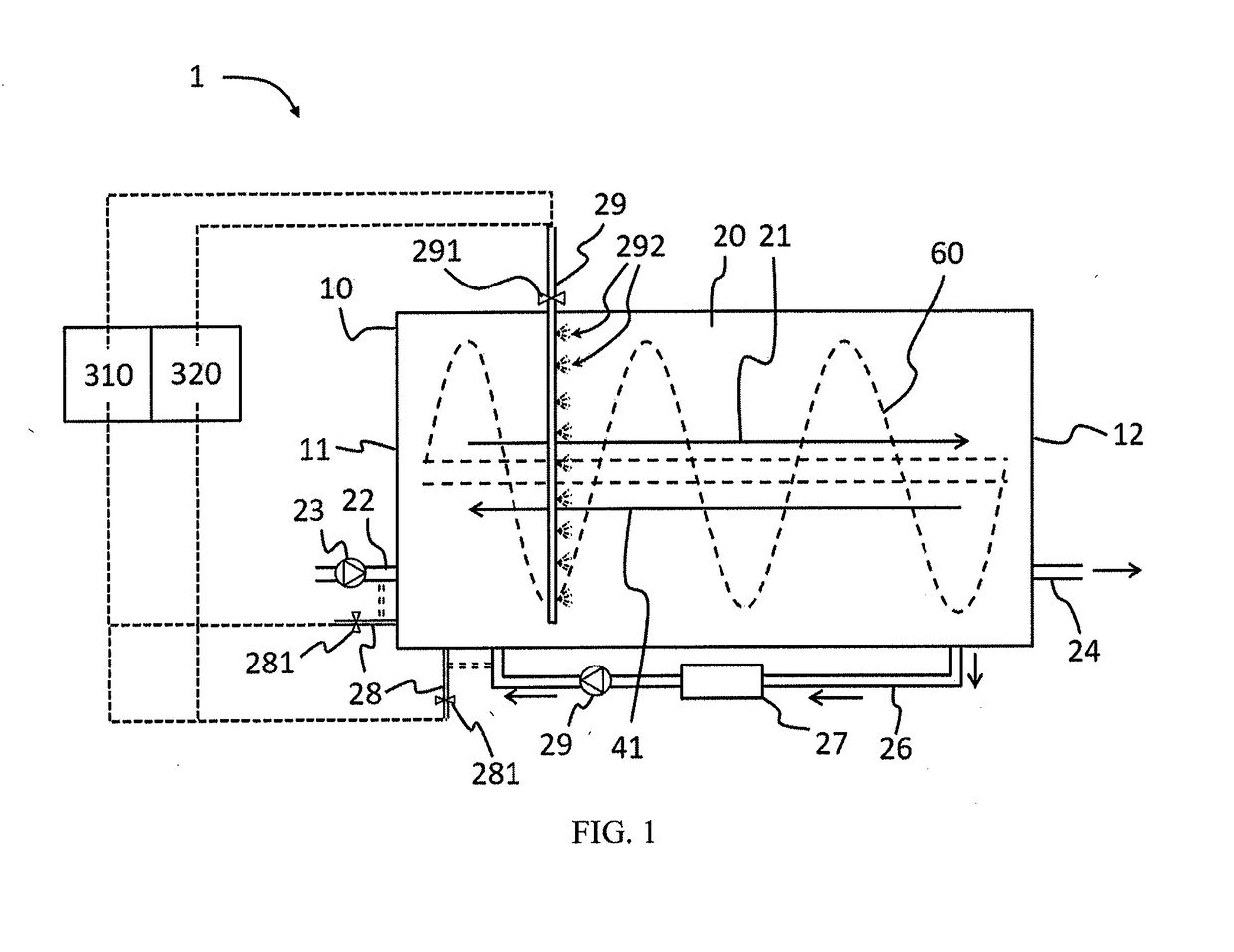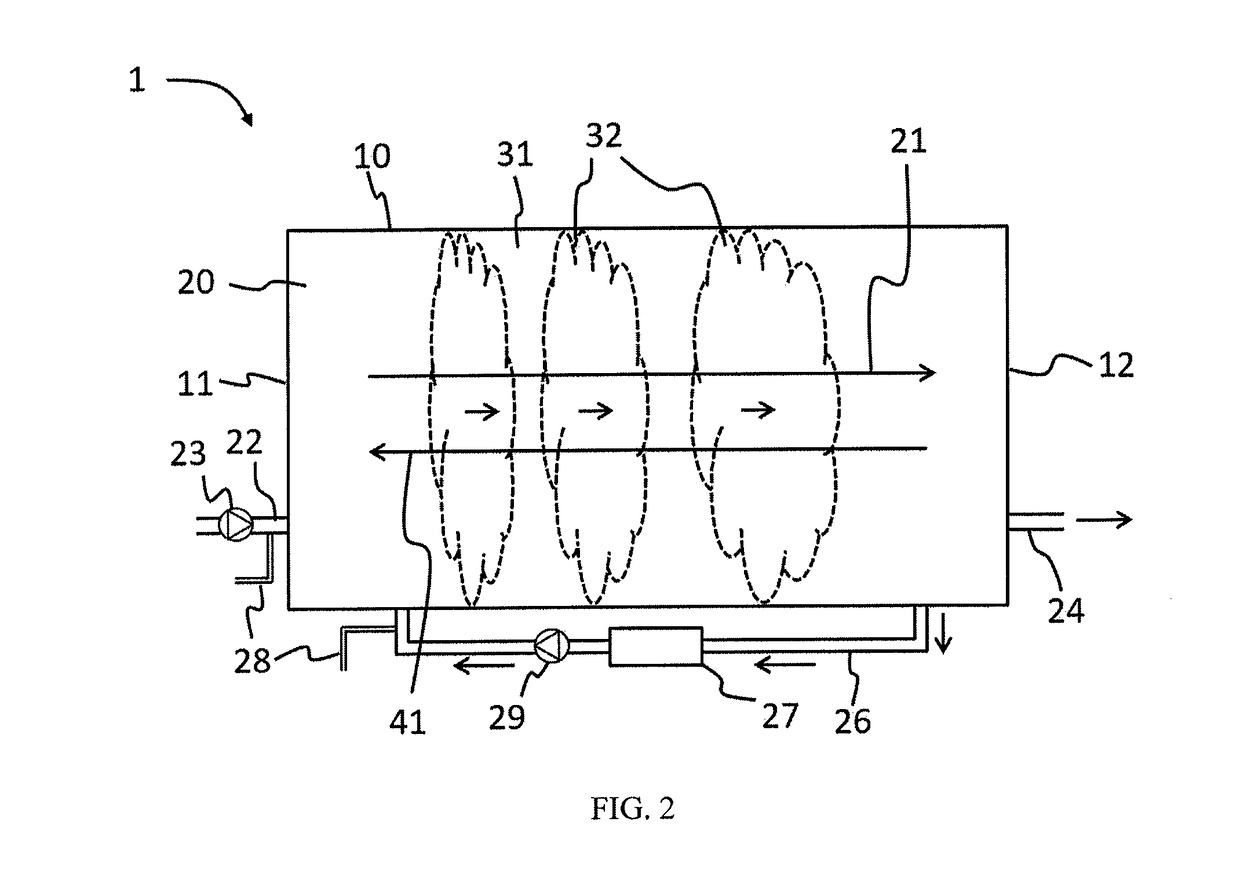Systems and methods for controlling water quality in food processing
a food processing and water quality technology, applied in the field of sprays and aqueous baths, can solve the problems of contaminating additional carcasses and processing equipment, affecting the quality of food processing, and the washing procedure fails to significantly reduce the burden of microorganisms on meat or poultry, etc., to achieve the effect of reducing the burden of bacterial load on mea
- Summary
- Abstract
- Description
- Claims
- Application Information
AI Technical Summary
Benefits of technology
Problems solved by technology
Method used
Image
Examples
example 1
[0054]A chiller bath at a poultry processing plant was outfitted with caustic dosing into an inlet line adjacent a first end of the bath, and peracetic acid dosing through a spray bar mounted above the bath as schematically shown in FIG. 3. The chiller bath did not include a recirculating line. Poultry carcasses were introduced into the bath at the second end and moved from the second end of the bath to the first end as bath solution flowed from the first end to the second end.
[0055]The pH of the bath solution was monitored, and it was observed that near the first end (dosing point of caustic), pH of the bath solution was about 10.5. Just after the dosing point of the peracetic acid, pH of the bath solution dropped sharply to about pH 7.1-7.3. The pH then gradually increased to about 7.9 near the second end of the bath. It was concluded that the spray bar could be used to create separate zones where in one zone the caustic and high pH dominates, and in another zone, peracetic acid d...
PUM
 Login to View More
Login to View More Abstract
Description
Claims
Application Information
 Login to View More
Login to View More - R&D
- Intellectual Property
- Life Sciences
- Materials
- Tech Scout
- Unparalleled Data Quality
- Higher Quality Content
- 60% Fewer Hallucinations
Browse by: Latest US Patents, China's latest patents, Technical Efficacy Thesaurus, Application Domain, Technology Topic, Popular Technical Reports.
© 2025 PatSnap. All rights reserved.Legal|Privacy policy|Modern Slavery Act Transparency Statement|Sitemap|About US| Contact US: help@patsnap.com



